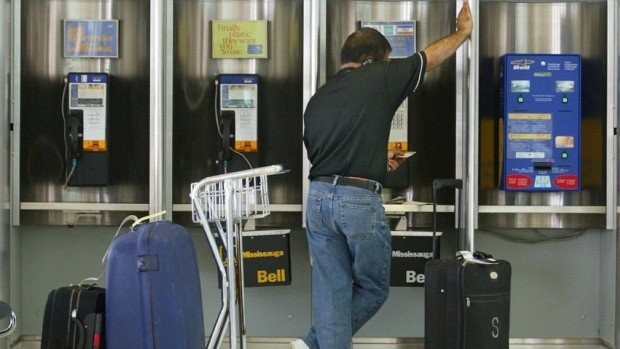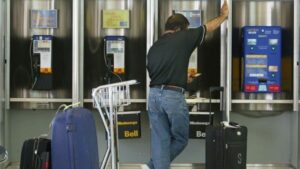01, 2017

Is telesales a good approach for B2B startup sales?
Question:
Is telesales a good approach for B2B startup sales?
Answer:
Think “inside sales” instead of “telesales,” and it’s a necessity to accompany travel to advance larger deals at key points of the sales process. (Luke Harmon’s has some very good criteria on this.)
Regardless, you need to use the phone extensively regardless of whether you’re performing “inside” or “outside” sales. Every outside sales meeting requires preparation, qualification, and follow up. No one does in-person meetings for every step in the sales process, even for products that sell for millions of dollars.

Here is my experience over the past 15 years, working with three startups (Aplia, Altos Research, and Blend), plus one publicly trading company (CoreLogic) to provide context on how a much larger, established company handles inside vs outside sales.
Have a Sales Question?
Grab a time to chat with Scott here.
Company: Aplia (startup)
Product/Market: Classroom software for university courses in Economics & Finance.
Deal sizes: $1k-$100k
Summary:
- Most selling was done over the phone.
- Six-person sales team – three full-time sales people and three others on the team that chipped in on the sales front – our marketing manager, product manager, CEO each handle selected accounts to balance the load.
- The three full-time salespeople traveled about 33%-50%, focusing travel around major metro areas with high concentrations of universities.
- We started the sales process with a discovery phone call and then advanced the opportunity with a product demo over the phone.
- Leads developed by researching professor websites and the university course schedule.
- As we worked with larger departments (several professors teaching the same course – ie. 1000 undergrads for Principles of Economics), we traveled for group sales presentations.
- Travel also helped us work with the university IT teams to open up ports required to access the software via computer labs.
- Deal closing was typically done over the phone several weeks after the on-site presentation.
- We sometimes would travel back to the new account for product training and helping teaching assistants learn how to use the software.
Company: Altos Research (startup)
Product/Market: Real estate market data for mortgage, housing, financial market and related analytics companies (i.e. Morgan Stanley, Freddei Mac, TCW, Goldman Sachs, Palantir, Hyatt, Pulte Homes)
Deal Sizes: $10k-$250k/year
Summary:
- I was the only salesperson, using my CEO on occasion as the “product expert” in selected deals.
- Most selling was done over the phone.
- Leads developed through web searches, blogging, webinars, and monthly housing reports sent to our mailing list.
- I traveled only during key parts of the sales process, and never traveled for a single sales meeting.
- For example, I would book a 2-3 day trip to Washington DC, Chicago, NYC, Dallas, and LA with 1-2 anchor meetings – deals that were close or a current large customer – then build a dance cards around those anchor meetings with prospects in the pipeline.
- I used industry conferences extensively to meet with executives from across the country, so leveraging “outside sales” without plane hopping across the country.
- Deal closing was always over the phone because of the follow-on legal and procurement team conversations regarding the contract.
Company: Blend (startup)
Product/Market: Enterprise software for banks and mortgage lenders
Deal sizes: undisclosed (but very large…)
Summary:
- The CEO and I are the lead salespeople, with two other on the Customer Success team emerging to take lead on new account development.
- Nearly all selling begins over the phone, even with introductions to top-level executives at our target accounts. Executives are busy people and they don’t have the time to meet in person unless there’s a really good reason.
- Problem discovery and brief product demos are conducted over the phone and with web meetings.
- After mutual qualification, an onsite meeting with a larger team is done. Sometimes the prospective customer visits our offices.
- Frequently there are multiple onsite meetings and product “deep dives.”
- Deal closing, including contract negotiation are done over the phone.
- Implementation upon start means heavy travel onsite for weeks at time with multiple team members (account managers, project manager, product team, engineers) to make sure the implementation is successful.
Company: CoreLogic ($2 billion in annual revenues, publicly traded)
Product/Market: Housing market data & analytics for US-based banks and financial companies
Deal sizes: $10k-$10mln/year
Summary: Three customer tiers within the division in which I worked ($500+mln/year; figures below approximate):
- Top 50 banks:
- Covered by 8-9 account managers, each of whom had an account coordinator and client director assisting. The client director was more senior and would develop strategic conversations with top executives to feed the account manager specific sales opportunities to develop. The account coordinators assisted with setting up product demos, follow ups, and general sales support.
- These accounts ranged from $1mln to $50mln in annual revenue each.
- They averaged about 50% in the office and 50% on the road, with variance based on time of year. In the Fall during budget season.
- Travel ramped to 75-90%, then scaled back in December and January.
- Travel then ramped again in February-May for industry conferences and filling the pipeline for next year’s budget season.
- Banks #51-200:
- Covered by ~10 account managers.
- They spent about 90% of their time in the office, on the phone. Travel was regulated to very large deals and conferences.
- These accounts ranged from $100k-$10mln in revenue.
- Occasional client director or account coordinator assistance.
- Banks #201-10,000:
- Covered by 30-40 account managers who spent 99% of their time in the office on the phone. Travel was strictly for occasional large deals.
- These accounts ranged from $0-$1mln in revenue.
- Occasional client director or account coordinator assistance.
** The inside sales teams covering #2 and #3 all sat in the corporate office in Irvine, CA. Half of a floor is carved out for these sales teams.
**This Q&A article was originally posted on Quora. Check out Scott’s Quora page here.
